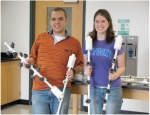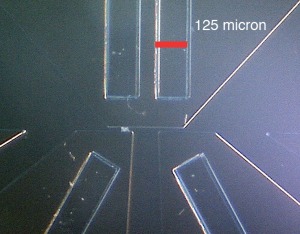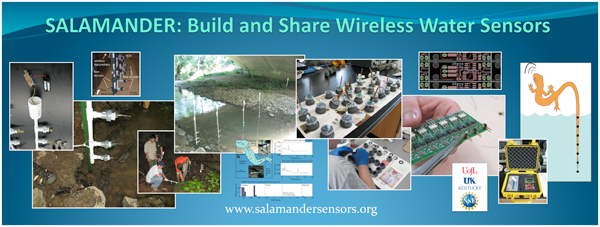The Salamander stream-sensor project is archived here. You can find circuit board design files for building water sensors based on the Moteiv/Crossbow/MEMSIC Telosb/TmoteSKY low-power wireless sensor network. From about 2007-2012 we developed 1-wire sensor capability (hardware and software) and housings so that users could add a string of underwater sensors to a single radio. We carry on developing compatible low-power flex, impedance, and chemical sensors in the Harnett lab at the University of Louisville, and studying sediment transport at the Fox lab at the University of Kentucky.
Latest Entries »
Here is a redesigned power board for the MEMSIC TelosB boards.
Thanks to summer student Paul Faget, you can use these design files to produce individual circuit boards that piggy-back on the TelosB and allow your radio to communicate with a local 1-Wire network running at 5V.
This summer we have a Co-op working on a closely related project through the Co-op Makership at Louisville’s LVL1 hackerspace : rapid-prototyping sensor housings for the bend sensors. Trent Lowry is using a 3-D printer, then casting some fittings that are compatible with our PVC parts. The uniformity should be much better than our current gluing method.
Deployment plans this summer include the most students yet. Sensors are going outside between Lexington and Louisville. We will have more dataloggers, and our newest ones can transmit data long distance. There will be plenty of soldering and gluing to do as usual.
Need to take a microscope outside? We tried and liked this USB scope from Adafruit, but needed an inverted microscope for a portable project so we laser cut an acrylic table for it. Here are the plans in pdf format. The back and sides are 5 inches across, cut from 1/4 inch thick clear acrylic, the top is 1/16″ (thin so you can still focus 200x on your items) and the nuts and bolts are 6-32 nylon. We had some Mcmaster nylon parts already: 94812A113 (nuts) and 94609A153 (bolts, were a bit long but easy to cut to length)
We wrapped things up in 2011 with conductivity sensors, pressure sensors for height sensing, and an improved setup at UK for calibrating light and flow sensors. Next summer, we are working on getting the data out over a long-range wireless connection. We will be seeking two Co-op students at Louisville for Summer 2012
In development now: a pressure sensor to provide a record of stream depth, and a conductivity sensor to determine whether water is present, and if so–what is the electrical conductivity, which is related to the concentration of salt and other chemicals. We are seeking local engineering co-op students to add new sensors to the system in summer 2011.
Swap and reassemble your sensors from one radio to another. When you turn the power off and on again, the radio will detect the new sensors’ IDs and begin polling them. Code available at Sourceforge: SearchROM-TelosB-Code.zip.
UPDATED code that lets you adjust the time between polling individual sensors AND the time to wait before starting over again from the top of the list. For instance, grab data from each sensor 0.5 seconds apart, then wait 10 minutes before polling again. Download Latest Code from GitHub
Welcome to the SALAMANDER environmental sensor project. We are building and distributing information on water sensors for sediment monitoring and other types of environmental research. Here are some photos from the project.



A recent student recruiting poster (pdf) gives a more detailed introduction.











